Trapping Tribolium castaneum (Coleoptera: Tenebrionidae) and Other Beetles in Flourmills: Evaluating Fumigation Efficacy and Estimating Population Density
- PMID: 33562327
- PMCID: PMC7915626
- DOI: 10.3390/insects12020144
Trapping Tribolium castaneum (Coleoptera: Tenebrionidae) and Other Beetles in Flourmills: Evaluating Fumigation Efficacy and Estimating Population Density
Abstract
This paper reports beetle pests common to flourmills targeted during a series of trapping studies over a two-year period in flourmill 1 and a one year period in flourmill 2. Objectives were (1) use pheromone-baited traps to detect T. castaneum (Herbst) and other pest species present for their distribution over space and time, (2) monitor T. castaneum activity before and after fumigations to assess efficacy of the treatment, and (3) correlate counts of T. castaneum via trap capture against direct T. castaneum counts from samples of the milled flour to assess the value of trap data to estimate relative size of the pest population. Traps were deployed in two different flourmills over two consecutive years. T. castaneum was the most commonly trapped beetle during both years in mill 1. In mill 2, Typhaea stercorea (L.) and Cryptolestes ferrugineus (Stephens) were both captured in higher numbers than T. castaneum. In mill 1, trap capture was higher overall during Year 2 for most of the species compared with capture during Year 1, likely due to a dust cover modification made for the pitfall trap used in Year 2. Trap capture was also evaluated by location within the mills and a significant difference was found in the capture of T. stercorea during both years in mill 1. T. castaneum captures were significantly reduced following most fumigations, which used methyl bromide in milling areas and phosphine in bulk-stored finished flour. However, in most cases trap catches showed that beetle populations were not eliminated. Trap captures after fumigation suggest either that the fumigations were not entirely effective, or that full grown adult beetles were entering the mill soon after fumigation. When captures of T. castaneum from traps in two spaces of mill 1 during Year 2 were compared with counts of beetles from samples of siftings collected in the finished flour, the correlation coefficients were nearly significant for both sets of traps.
Keywords: Cryptolestes ferrugineus; Typhaea stercorea; methyl bromide; pheromone; phosphine; red flour beetle; stored products; traps.
Conflict of interest statement
The authors declare no conflict of interest in this work.
Figures
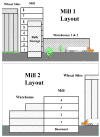
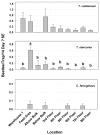
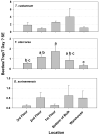
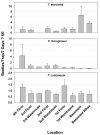

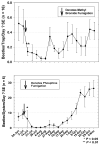
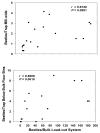
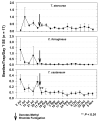
References
-
- Hagstrum D.W., Phillips T.W., Cuperus G., editors. Stored Product Protection. Kansas State University; Manhattan, KS, USA: 2012. 352p KSRE Publ. S-156.
-
- Agricultural Experiment Station . Mill and Stored-Grain Insects. Kans. State Agric. Coll., bull. 189; Manhattan, KS, USA: 1913.
-
- Cotton R.T., Frankenfeld J.C., Dean G.A. Controlling Insects in Flour Mills. USDA; Washington, DC, USA: 1945. pp. 1–75.
-
- Good N.E. Insects found in the milling streams of flour mills in the southwestern milling area. J. Kans. Entomol. Soc. 1937;10:135–148.
Grants and funding
LinkOut - more resources
Full Text Sources
Other Literature Sources

